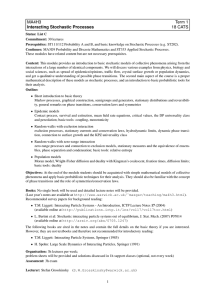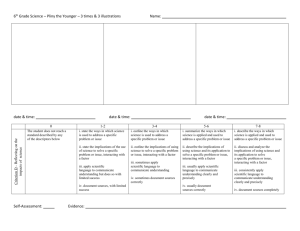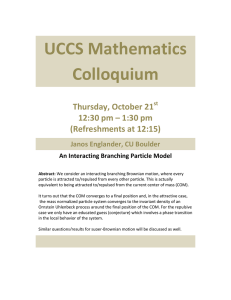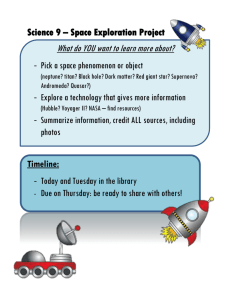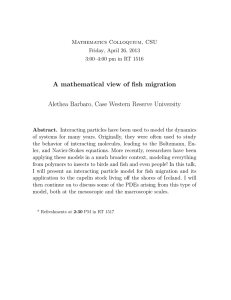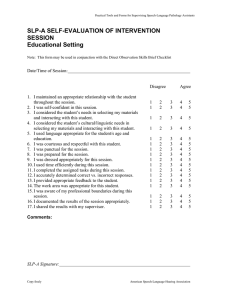MA4H3 Term 2 18 CATS Interacting Particle Systems
advertisement
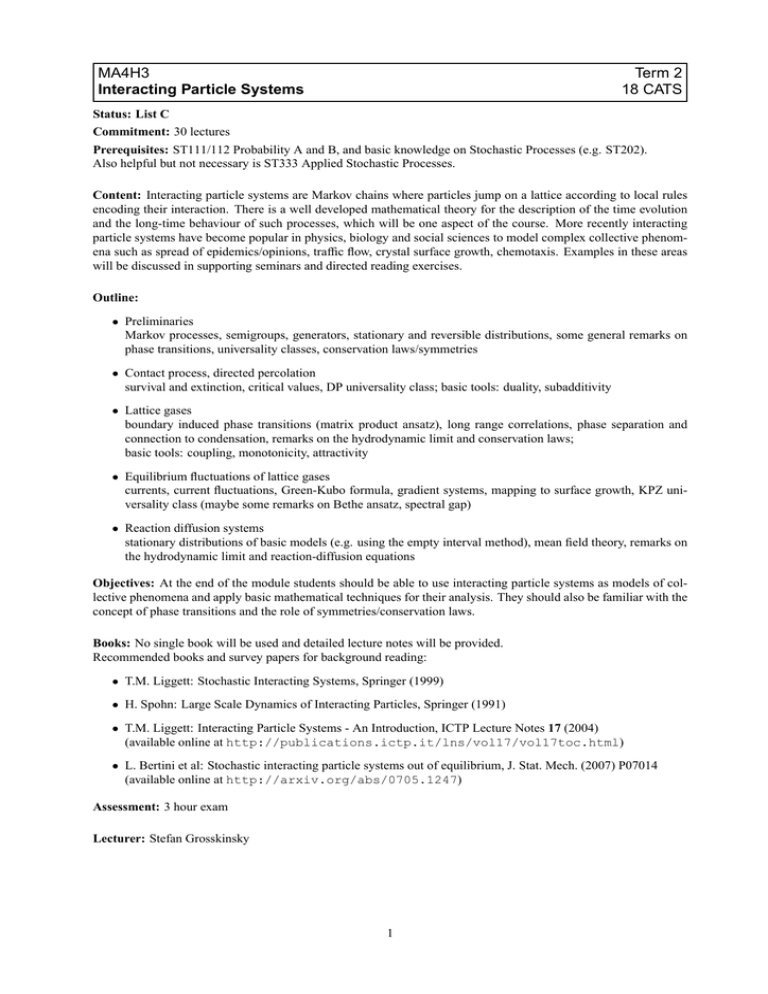
MA4H3 Interacting Particle Systems Term 2 18 CATS Status: List C Commitment: 30 lectures Prerequisites: ST111/112 Probability A and B, and basic knowledge on Stochastic Processes (e.g. ST202). Also helpful but not necessary is ST333 Applied Stochastic Processes. Content: Interacting particle systems are Markov chains where particles jump on a lattice according to local rules encoding their interaction. There is a well developed mathematical theory for the description of the time evolution and the long-time behaviour of such processes, which will be one aspect of the course. More recently interacting particle systems have become popular in physics, biology and social sciences to model complex collective phenomena such as spread of epidemics/opinions, traffic flow, crystal surface growth, chemotaxis. Examples in these areas will be discussed in supporting seminars and directed reading exercises. Outline: • Preliminaries Markov processes, semigroups, generators, stationary and reversible distributions, some general remarks on phase transitions, universality classes, conservation laws/symmetries • Contact process, directed percolation survival and extinction, critical values, DP universality class; basic tools: duality, subadditivity • Lattice gases boundary induced phase transitions (matrix product ansatz), long range correlations, phase separation and connection to condensation, remarks on the hydrodynamic limit and conservation laws; basic tools: coupling, monotonicity, attractivity • Equilibrium fluctuations of lattice gases currents, current fluctuations, Green-Kubo formula, gradient systems, mapping to surface growth, KPZ universality class (maybe some remarks on Bethe ansatz, spectral gap) • Reaction diffusion systems stationary distributions of basic models (e.g. using the empty interval method), mean field theory, remarks on the hydrodynamic limit and reaction-diffusion equations Objectives: At the end of the module students should be able to use interacting particle systems as models of collective phenomena and apply basic mathematical techniques for their analysis. They should also be familiar with the concept of phase transitions and the role of symmetries/conservation laws. Books: No single book will be used and detailed lecture notes will be provided. Recommended books and survey papers for background reading: • T.M. Liggett: Stochastic Interacting Systems, Springer (1999) • H. Spohn: Large Scale Dynamics of Interacting Particles, Springer (1991) • T.M. Liggett: Interacting Particle Systems - An Introduction, ICTP Lecture Notes 17 (2004) (available online at http://publications.ictp.it/lns/vol17/vol17toc.html) • L. Bertini et al: Stochastic interacting particle systems out of equilibrium, J. Stat. Mech. (2007) P07014 (available online at http://arxiv.org/abs/0705.1247) Assessment: 3 hour exam Lecturer: Stefan Grosskinsky 1
